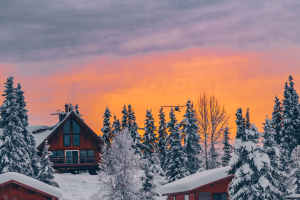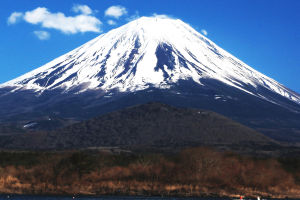As we all know, the Dead Sea is the largest saltwater lake in the world. Its own salt content is very dense, which has also led to the occurrence of people in the Dead Sea area being able to float above the water.
This feature also makes the Dead Sea a world-famous tourist destination. Every year, countless people flock here to enjoy the pleasure of floating on the water.
But everything has two sides. The high concentration of salt in the Dead Sea itself also makes it unsuitable for the survival of most organisms, including the sparse vegetation in the coastal areas of the Dead Sea.
The high salt content is also bad for all the plants that live there, so it makes the area around the Dead Sea even barer. During this period of time, relevant personnel has also discovered that the area of the Dead Sea is shrinking, and a large amount of area evaporates every year. This former largest saltwater lake in the world may eventually face the risk of disappearing.
However, the saltwater lake that once disappeared in history has now regained its vitality.
1. Dazzling past life
This so-called disappeared saltwater lake is actually Lop Nur. That's right, it is the well-known sea of death. The wind and sand in this area are raging, and it is so bare that it is really difficult to connect with the saltwater lake with abundant water sources. But in fact, the current situation only began in the last century. Lop Nur itself was actually a lush oasis before its more distant history.
This oasis area has nourished countless residents living here. It used to be a fertile area rich in water sources, so why is it a saltwater lake, but the area around the Dead Sea is bare, but the area around Lop Nur used to be an oasis.
In fact, the main problem is the concentration of lake water. The concentration of salt in the Dead Sea is particularly high, which is 8.6 times that of seawater. However, the salt content in the Lop Nur area is actually less than 1/3 of the salt content in the ocean. Compared with such a low concentration, the salt content is sufficient to support the survival of most organisms.
2. The Lost Oasis
In the process of evaporation, as the water resources of Lop Nur itself decrease, the minerals and salts contained in it cannot be evaporated.
Therefore, under the dwindling water resources, its own salt content and mineral concentration are increasing day by day, which also makes the animals and plants in the area gradually unable to adapt to the increasingly harsh environment of Lop Nur, and eventually leads to the death of a large number of migrating animals and plants. What was originally a desert oasis became part of what is now the desert.
3. Rebirth
So why has Lop Nur now been revived? In fact, this is closely related to environmental protection policies.
As a large number of trees participate in the transpiration of the desert area itself, a large amount of water is retained and continuously returned to the local climate, which increases the moisture content in the air in some areas and promotes rainfall. This reduces the water evaporation effect of the Lop Nur area itself to a certain extent.
In addition, trees and other plants can effectively fix the surface soil, further consolidate the local water source, reduce the evaporation of water, and thus provide a very huge role in the storage of water resources in Lop Nur itself.


